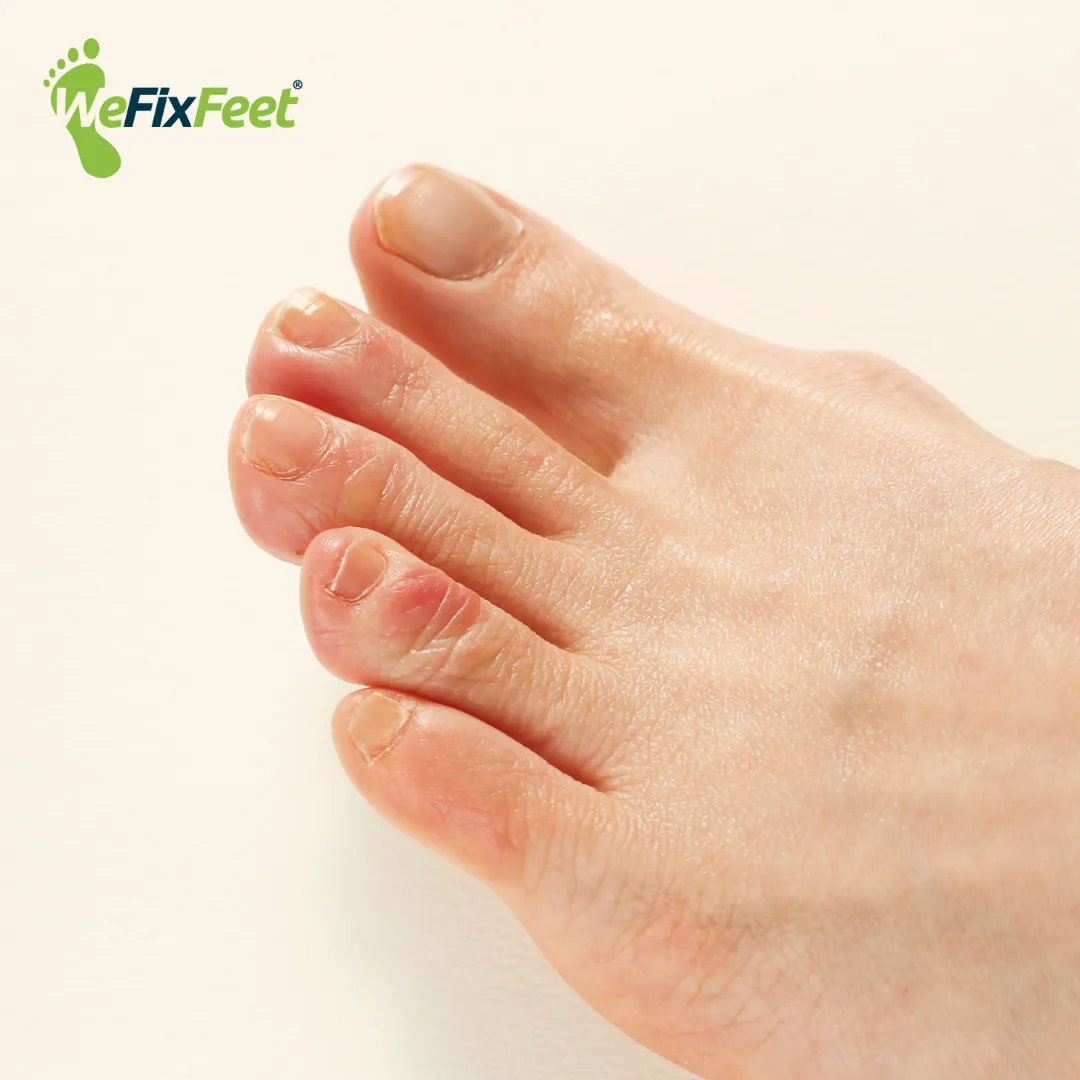
Understanding Chilblains: Causes, Symptoms, and Effective Treatments

Understanding Chilblains: Causes, Symptoms, and Effective Treatments
Winter can bring a host of foot problems, and one common issue many people face is chilblains. These small, itchy, red patches can be both uncomfortable and painful, but understanding their causes, symptoms, and treatments can help you manage and prevent them. Let's explore what chilblains are, their signs and symptoms, and the effective treatments available at podiatry clinics in the UK, along with some essential home care advice.
What Are Chilblains?
Chilblains, also known as pernio, are small, red or purple itchy areas that appear on the skin after exposure to cold, damp conditions. They usually affect the toes, fingers, ears, and nose but can occur on any extremity. Chilblains occur due to an abnormal reaction to the cold, where the small blood vessels in the skin constrict and then expand too quickly, causing leakage of blood into the surrounding tissues.
Causes of Chilblains:
The primary cause of chilblains is exposure to cold and damp environments. When your skin is exposed to cold temperatures, the blood vessels constrict to preserve body heat. If the skin is then exposed to sudden warmth, the blood vessels may not respond properly, leading to inflammation and chilblains. Some factors that increase the risk of developing chilblains include:
Poor Circulation: Individuals with poor circulation are more susceptible to chilblains because their blood vessels may not react as efficiently to temperature changes.
Cold Weather: Chilblains are more common in winter due to prolonged exposure to cold, damp conditions.
Underlying Health Conditions: Conditions like Raynaud’s phenomenon, diabetes, and other circulatory issues can increase the risk of developing chilblains.
Lifestyle Factors: Smoking, inadequate clothing, and wearing tight shoes can contribute to the development of chilblains by affecting circulation.
Signs and Symptoms of Chilblains:
Chilblains typically develop a few hours after exposure to cold and may present the following signs and symptoms:
Small, itchy red or purple patches on the skin
Swelling in the affected area
A burning or tingling sensation
Blistering in severe cases
Dry, cracked skin that may ulcerate if scratched
These symptoms usually resolve within one to three weeks if treated properly and further exposure to cold is avoided.
Treatment in a Podiatry Clinic:
If you are experiencing persistent or severe chilblains, seeking professional treatment at a podiatry clinic can provide relief and prevent complications. Here are some treatment options available:
Topical Treatments:
Podiatrists may prescribe topical creams or ointments containing corticosteroids to reduce inflammation and itching. These treatments can help soothe the affected skin and promote healing.
Medication:
In some cases, oral medications such as nifedipine may be prescribed to improve blood flow and prevent the recurrence of chilblains. This medication helps to dilate blood vessels and improve circulation.
Footwear Advice:
Podiatrists can provide advice on suitable footwear to keep your feet warm and dry. They may recommend shoes with good insulation and moisture-wicking socks to prevent further episodes of chilblains.
Wound Care:
If chilblains have caused blisters or ulcers, proper wound care is essential. A podiatrist can clean and dress the wounds to prevent infection and promote healing.
Circulation Improvement:
Podiatrists may suggest exercises and techniques to improve circulation in your feet, reducing the risk of chilblains. This can include foot and leg exercises, as well as advice on keeping your feet warm.
Home Care Advice:
In addition to professional treatment, there are several steps you can take at home to manage and prevent chilblains:
Keep Warm:
Wear warm clothing, including gloves and thick socks, to protect your extremities from the cold. Consider using hand and foot warmers for extra warmth.
Avoid Sudden Temperature Changes:
Gradually warm your skin after being in the cold to avoid sudden temperature changes. Use lukewarm water to warm your feet rather than hot water.
Moisturise:
Apply moisturiser regularly to keep your skin hydrated and prevent it from becoming dry and cracked. This can help reduce the risk of chilblains.
Avoid Tight Footwear:
Wear well-fitting shoes that allow for good circulation. Avoid tight shoes and socks that can restrict blood flow to your feet.
Stay Active:
Regular exercise can improve blood circulation and reduce the risk of chilblains. Simple foot exercises and stretching can help keep your blood flowing.
Elevate Your Feet:
When resting, elevate your feet to improve circulation and reduce swelling. This can help alleviate the symptoms of chilblains.
Avoid Smoking:
Smoking can constrict blood vessels and reduce circulation, increasing the risk of chilblains. Quitting smoking can improve overall circulation and foot health.
Understanding the causes and symptoms of chilblains is the first step towards effective management and prevention. If you’re struggling with persistent or severe chilblains, it’s essential to seek professional help. Contact We Fix Feet for a comprehensive evaluation and personalised treatment plan. Book an appointment online or call us at 0115 9328832 to keep your feet healthy, warm, and chilblain-free this winter.
Ask The We Fix Feet Team
Fill in the form to request a Call From Our Team
One of our team will call you for FREE and answer any questions or concerns you may have about your uncomfortable foot condition

Where To Find We Fix Feet
Our We Fix Feet podiatry clinics are conveniently located in Ilkeston, Derbyshire and Beeston, Nottinghamshire
Open: Mon-Fri 09:00-17:00 / Sat 09:00-13:00
94 Bath Street, Ilkeston, Derbyshire DE7 8FE
8 Wollaton Road, Beeston, Nottinghamshire NG9 2NR
Pay and display parking nearby




